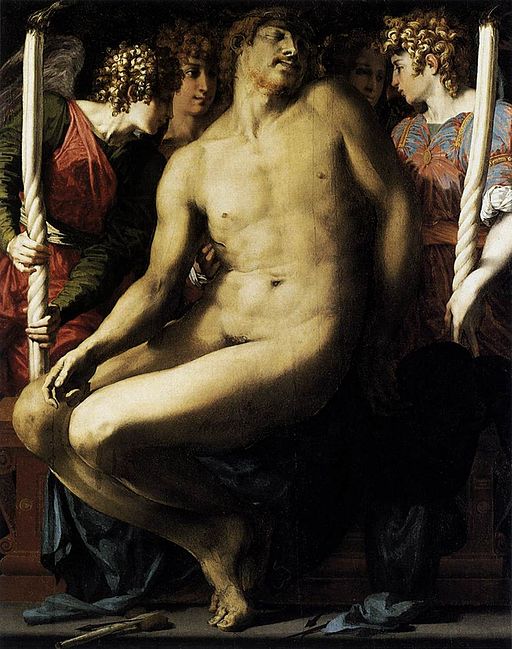CONSIDERING Boston’s reputation for Puritanism, you might expect the city’s Museum of Fine Arts to have a suitably sexless art collection. And yet, the MFA has one of the world’s great collections of LGBT-themed artworks.

This is particularly true of the museum’s Ancient World and Asian collections, each of which benefited in the museum’s early years from the largesse of a wealthy gay collector with a special interest in erotica. On the Greek and Roman side, there was Edward Perry “Ned” Warren (1860-1928), who donated an amazing collection of homoerotica to the museum, including a statue of the god Priapus. On the Japanese side, it was William Sturgis Bigelow (1850-1926), who donated over 40,000 works to the MFA, including woodblock prints so racy that many have supposedly still not been catalogued, let alone displayed.
In addition to these collections, there are a number of individual pieces with homoerotic themes in other collections as well. One great example is Rosso Fiorentino’s Dead Christ with Angels of 1524-27. Rosso was what we would call a Mannerist painter, which essentially means a follower of Michelangelo. Indeed, most of the Mannerists followed Michelangelo in both his art and his sexuality—or at least in his artistic sexuality, which is to say a strong tendency toward making homoerotic images. In this context, it is not in itself unusual that he chose the dead Christ as a subject to be homo-eroticized. In fact, the dead Christ is often depicted in an erotic way in Western art from the Renaissance through the 19th century. Whatever the theological justifications for this practice, it seems quite clear that the nearly naked Jesus, on or off the cross, provided a socially legitimate outlet for the depiction of an eroticized male figure.
All that said, Rosso’s Christ goes beyond the usual constraints in this eroticizing tendency. His Christ languishes with something like the opposite of rigor mortis, an ecstatic expression resting on his perfect face. He is being held in the arms of a rather dishy group of angels, one of whom seems to be caressing Jesus’ wounds as two others carry remarkably ropey, phallic candles. Also unusual is Jesus’ complete nudity, which adds to the erotic effect, and especially the presence of a tuft of pubic hair. The way his legs hide his genitals also makes him a little gender-ambiguous when added to the soft sensuousness of his body. All in all, the effect is strikingly suggestive: as one tour participant said to me last year, “What is that boy sitting on?”
Renaissance art is full of LGBT themes, from Donatello to Caravaggio, and it’s nice to know that you don’t have to travel to Italy to observe these themes firsthand. Other pieces from the Renaissance, as well as the aforementioned ancient and Asian collections, are among the artworks covered on the gay secrets tour of the MFA.
These tours, sponsored by Oscar Wilde Tours, take place on Wednesday evenings through the spring and cost $25. Admission to the MFA is free on Wednesdays. To learn more, visit www.OscarWildeTours.com/events/





